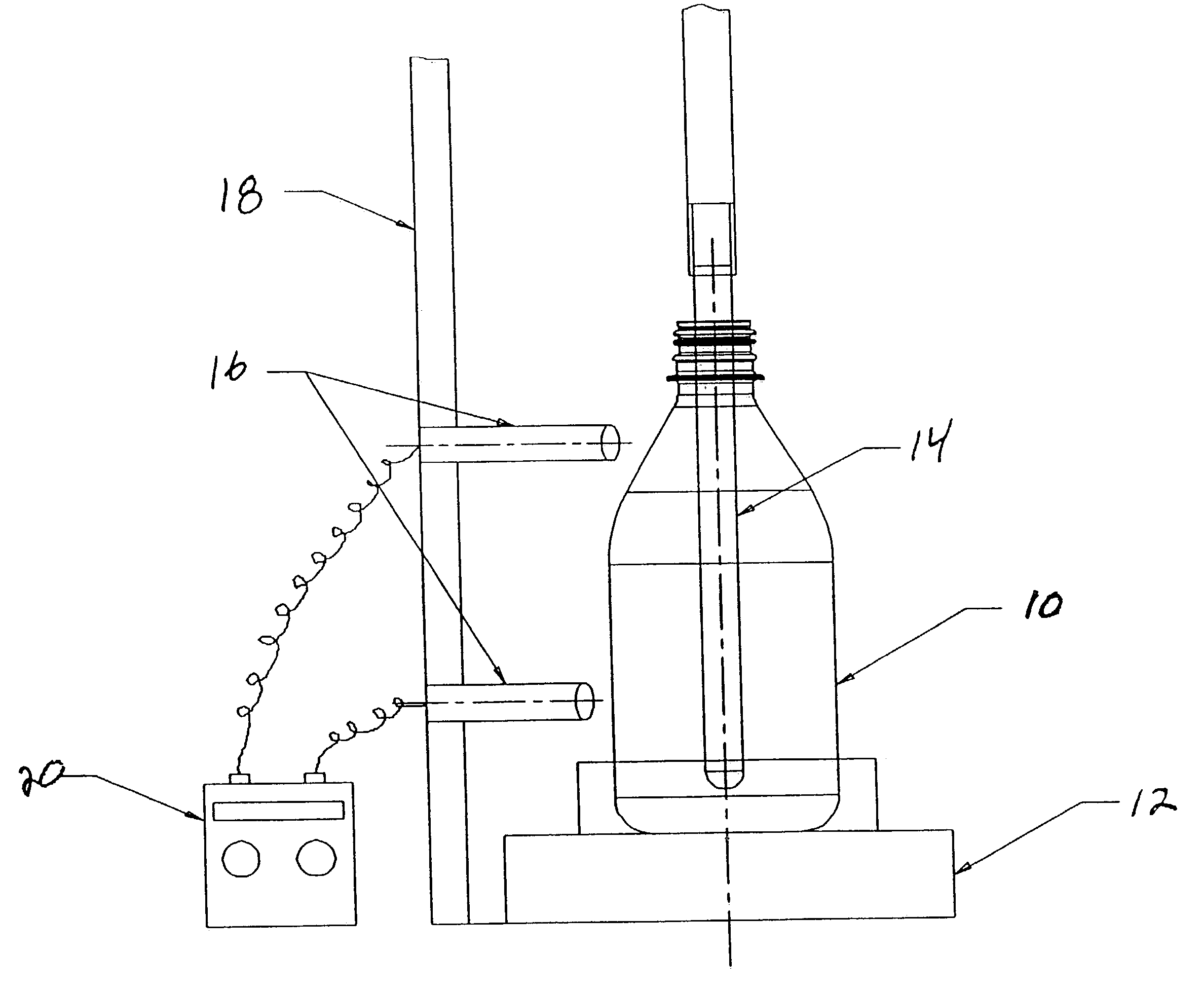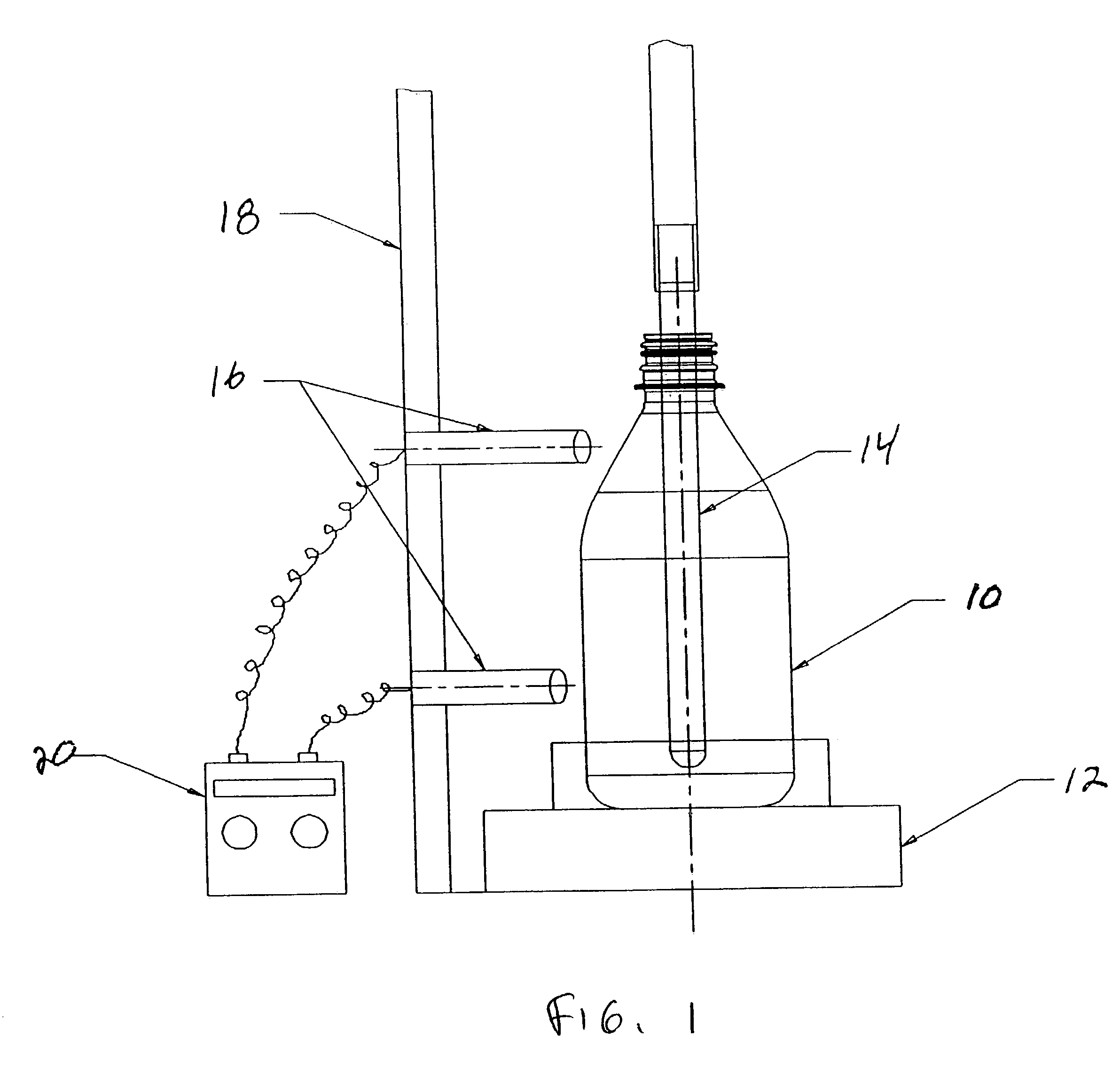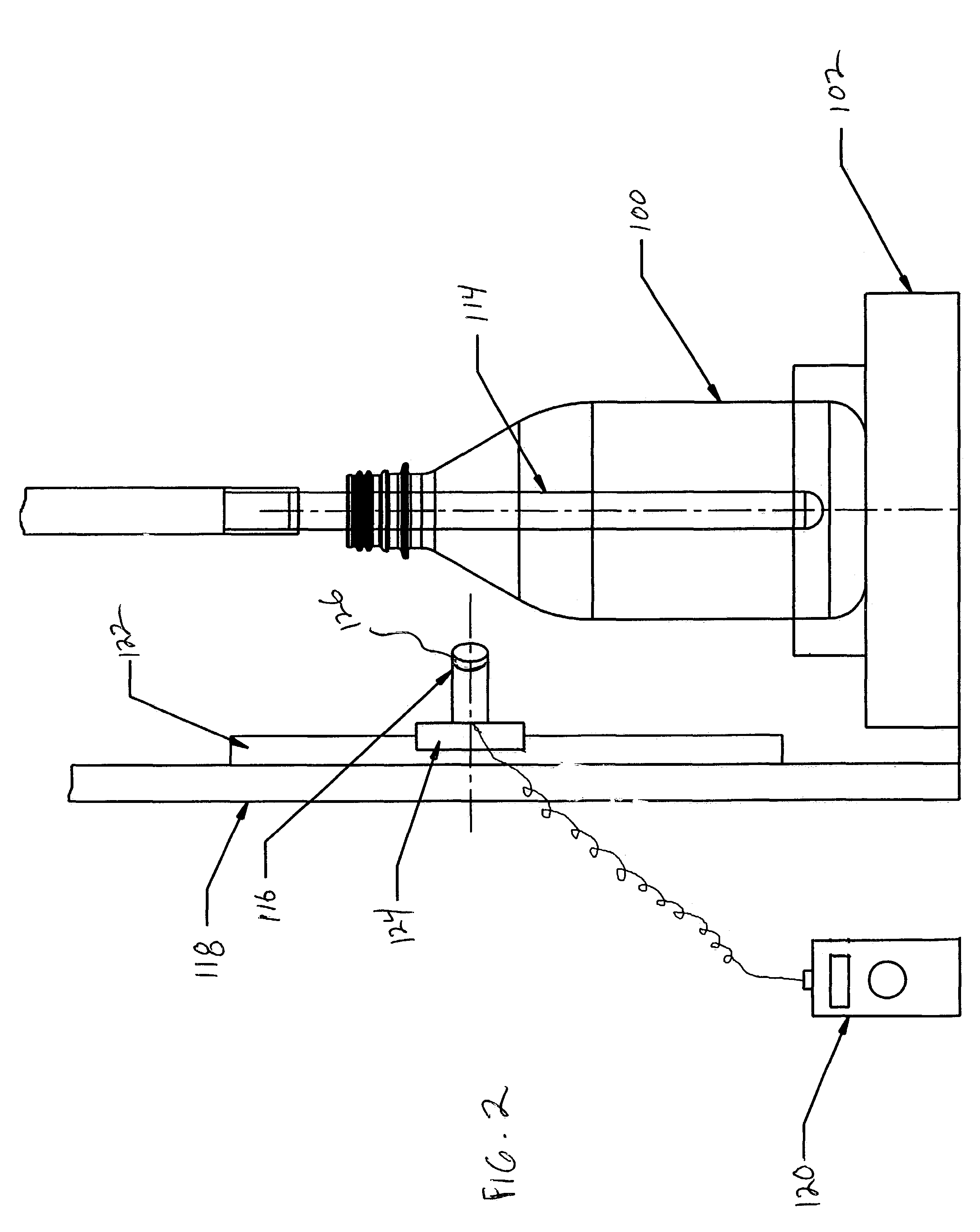Process and apparatus for testing bottles
a technology for testing bottles and containers, applied in the field of plastic containers, can solve the problems of increasing scavenging materials cannot effectively curtail permeation through a highly porous container wall, and the use of plastic containers sometimes proves less desirable when compared to containers formed, etc., to achieve uniform thickness, reduce material costs and/or production inefficiencies, and reduce the effect of material cost and/or production inefficiency
- Summary
- Abstract
- Description
- Claims
- Application Information
AI Technical Summary
Benefits of technology
Problems solved by technology
Method used
Image
Examples
Embodiment Construction
[0026]Referring now to the drawings in detail, FIG. 1 shows a representative embodiment of the present invention. A bottle 10 is provided with a coating or layer on the internal surface thereof. For example, the bottle may have been previously coated with a carbon coating in a first stage, as for example by the use of acetylene gas on the internal surface thereof. Representative procedures for carbon coating are shown in U.S. Pat. Nos. 6,475,579, 6,495,226 and 6,461,699.
[0027]Naturally, other materials may be used for coating the container, and the coating may be provided on the external surface if desired. For example, a desired UV inhibitor may be effectively spray coated on the internal surface of the container.
[0028]The coated container 10 is transferred desirably from the coating step to a rotary table 12. Rod 14 is inserted in the container and shines ultraviolet light through the coated internal surface of the container to one or more ultraviolet sensors 16 located outside th...
PUM
| Property | Measurement | Unit |
|---|---|---|
| thickness | aaaaa | aaaaa |
| thickness | aaaaa | aaaaa |
| length | aaaaa | aaaaa |
Abstract
Description
Claims
Application Information
 Login to View More
Login to View More - R&D
- Intellectual Property
- Life Sciences
- Materials
- Tech Scout
- Unparalleled Data Quality
- Higher Quality Content
- 60% Fewer Hallucinations
Browse by: Latest US Patents, China's latest patents, Technical Efficacy Thesaurus, Application Domain, Technology Topic, Popular Technical Reports.
© 2025 PatSnap. All rights reserved.Legal|Privacy policy|Modern Slavery Act Transparency Statement|Sitemap|About US| Contact US: help@patsnap.com



